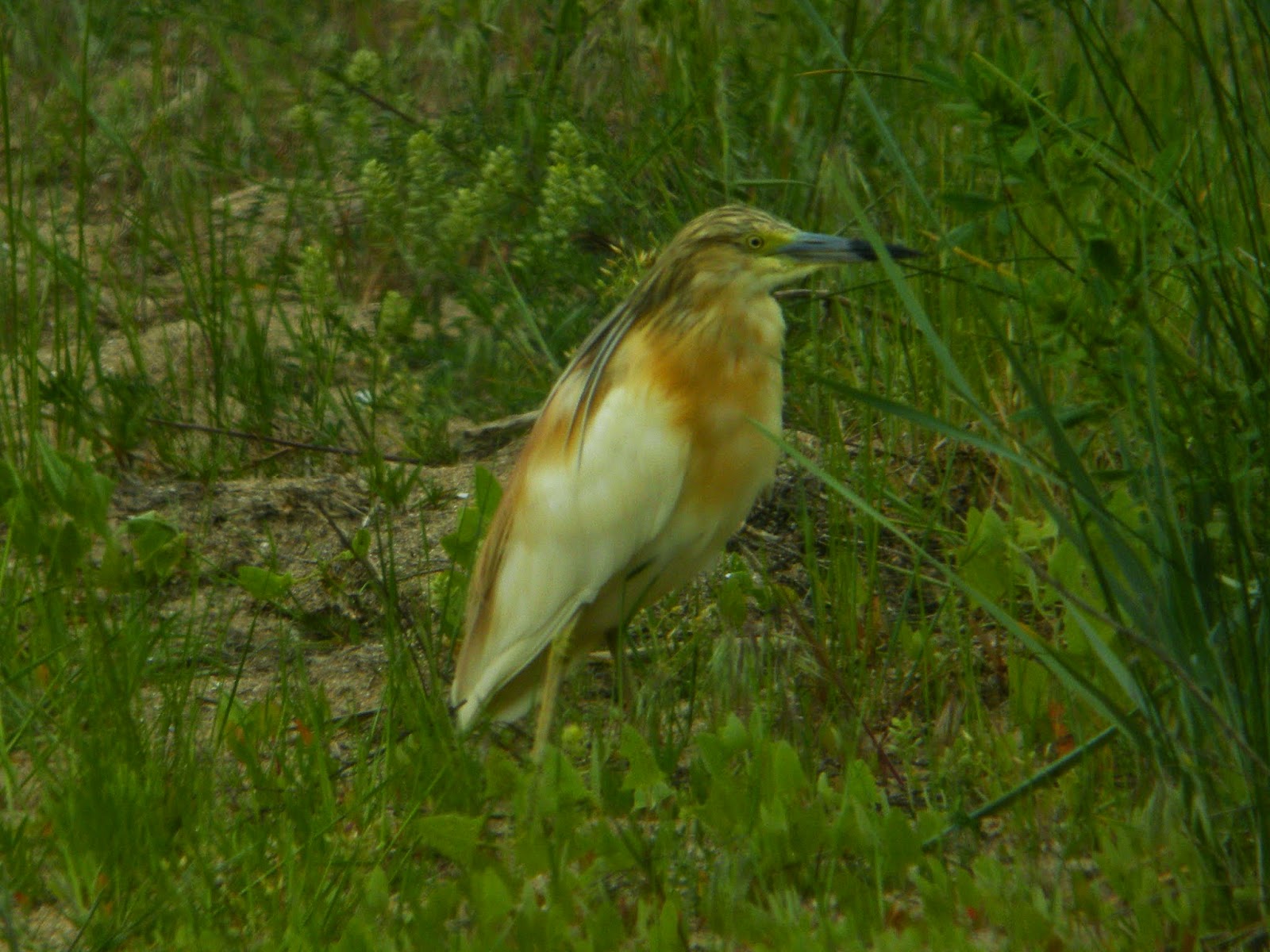We got up nice and early to explore the waste ground and cliffs which are adjacent to the hotel, unfortunately it was quite windy so many birds were keen to keep their heads down. Despite the weather we saw a good selection of migrants and breeding species, several warblers put in an appearance, we saw both Common and Lesser Whitethroat, also Barred and Garden Warblers as well as Blackcap, Black Redstart, Common Cuckoo, Golden Oriole, Red-backed Shrike and White Wagtail. We heard a Marsh Warbler and when we first got out a Thrush Nightingale was seen by just one participant so we never counted it on the main trip list.
 |
| Squacco Heron seen at Durankulak |
After a lovely breakfast we drove to Durankulak marshes, a protected area near the border with Romania, it is the main wintering grounds for Red Breasted Geese. As we approached the entrance we passed the first lagoon and above it we saw a White-tailed Eagle drifting over, the bird was very distant but you see the immensity of it when several Magpies tried to harass it, what a great find. We also saw Marsh Harrier and a small flock of White Pelicans.
The reserve backs onto the beach and it was from this direction that we walked into the area. From a vantage point on some sand dunes we could see small lagoons behind a vast reed bed. The wind was quite bad and made it feel quite cold, from the car we saw both Spanish and Tree Sparrows and a pair of Pied Wheatears fed on the beach with a host of Barn Swallows, they were all eating a swarm of grounded black flies, easy pickings for them.
 |
| the group on the raised sand bank at Durankulak |
The lagoons held a lot of Ferruginous Ducks, Mute Swans, Squacco Herons, Common Coot and a Grey Heron flew over. The reeds were alive with bird song but not much could be seen, just the occasional Great Reed Warbler showed, then the White Tailed Eagle showed up again, this time it was much closer and we got some excellent views of it, a magnificent bird.
As we walked further along the Black Sea shore-line we found Curlew Sandpiper, Little Stint, Little Ringed Plover, Black Terns flew by and lots of Yellow Wagtails flitted about, these were the Feldegg sub-species. Then we saw a Savi's Warbler singing out in the open, followed by a short view of a pair of Bearded Tits and then a Reed Bunting sat out to sing.
 |
| The two bathers - Black-headed Bunting above and Yellow Wagtail below |
 |
On the road again, we drove south back to the Shabla Lakes some 20 minutes away, we stopped to buy our picnic supplies before settling down in a sheltered spot near the beach to eat it. During lunch we saw Common Kestrel and a Hobby circle above us.
 |
| Red-breasted Flycatcher - female |
Further down the track, which led to the Shabla Lake, we found a couple of Blackcaps another Garden Warbler and a Willow Warbler. At the lake we stood on a raised viewing platform and listed several species, a pair of Eurasian Teal were new for us. We also saw a good number of terns, with Black, Whiskered and Common on show.
 |
| Red-backed Shrike at Kaliakra Cape |
 |
| view looking back inland from the Cape |
 |
| House Martins doing what they do best |
 |
| a local celebrity - Pied Wheatear |
Our day concluded with the hour drive back to the hotel arriving with just enough tome to shower before dinner. It had been a day of mixed weather and mixed fortunes but we all enjoyed it.

No comments:
Post a Comment